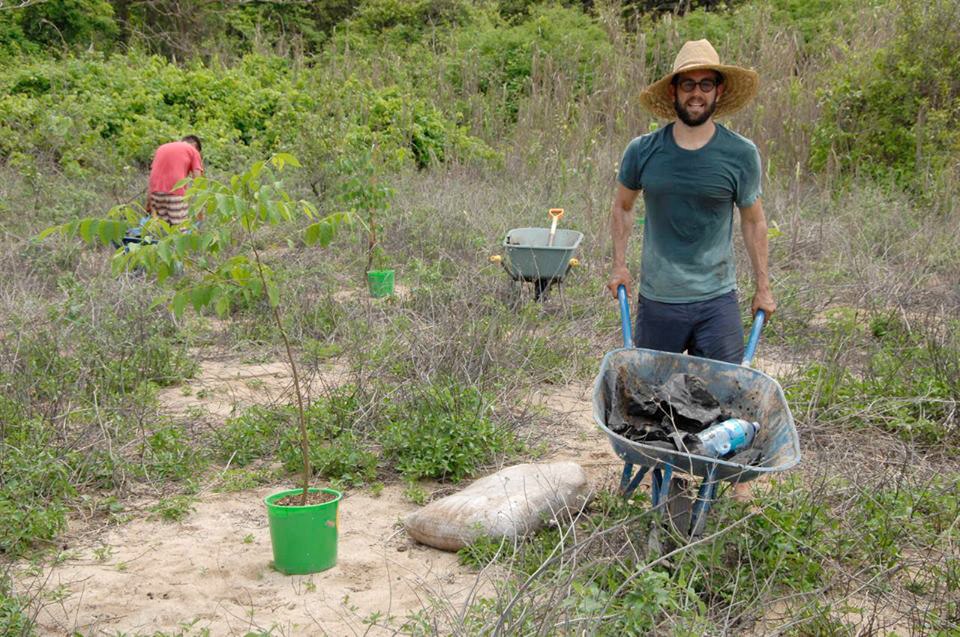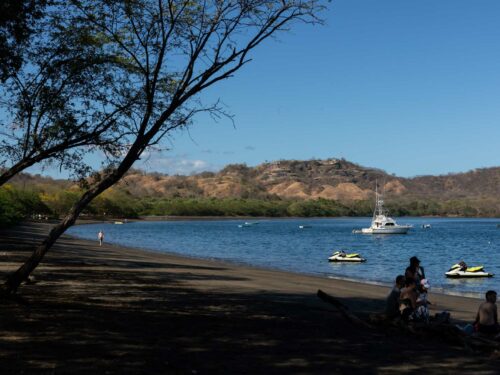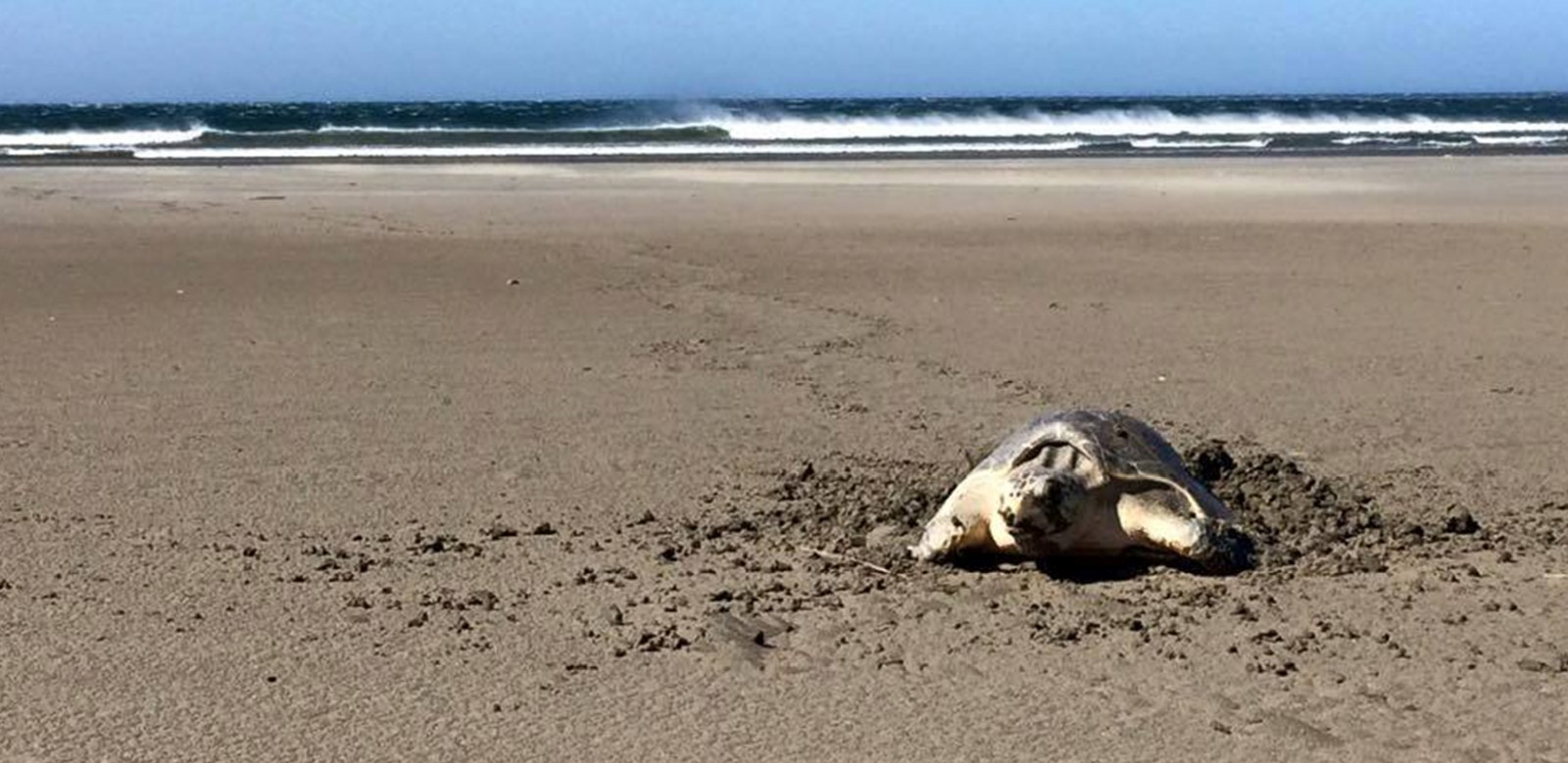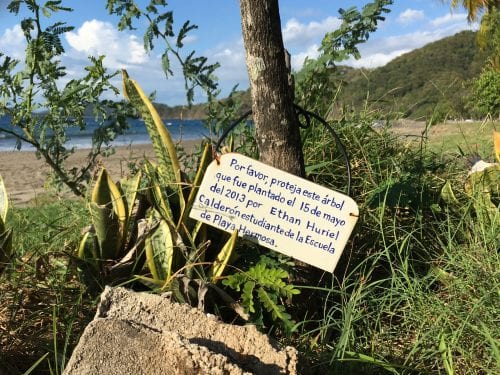
Imagine relaxing in the shade along the beach, looking up into the lush trees to see monkeys and birds, and other wildlife, returning to what was once their habitat. This is the vision that drives biologist Gerardo Bolaños Cespedes to recruit friends, coworkers, local businesses, school children and, frankly, anyone he can, to pitch in with the Barri-Guiones reforestation project.
This is the secondproject of Costas Verdes (Green Coasts), which initiated with an ongoing reforestation project in Playa Hermosa, Jaco. The Guiones project started in 2011 with the help of the Nosara Civic Association and the mission of restoring 6 hectares of fragile dry tropical forest ecosystem that was destroyed by cattle farming in the 1930s and 1940s.
This isn’t your typical tree planting project where people plant a bunch of trees one day and hope that they grow. It’s an ongoing scientific study. Entering their third season of planting trees, Bolaños, who is the Guiones project leader, said they have learned a lot.
In May of 2011, they planted 1300 trees, but the saplings were very small and they didn’t use fertilizer. Unfortunately only about 30% survived. Undaunted, in May of 2012, another 400 slightly larger trees were planted and fertilizer was used. In addition, arrangements were made to water the plants throughout the dry season. These efforts more than doubled the survival rate to 70%.
This year, they are using even more fertilizer, an organic worm compost, and they are varying factors such as distance from the beach and density to determine the optimal conditions for best results. For example, they are planting clusters of eight indigoberry trees close together because in field studies they have observed that this species is usually found in groups. This may also create competition between the trees so they grow faster and stronger.
This year, the group has the ambitious goal of planting 1900 trees during May and June, introducing a larger variety of tree species, including manchineel, indigoberry, guacimo, panama and olive, among others. Species have been chosen based on an inventory of local biodiversity, which Bolaños started making about 4 years ago. The group collects seeds of native species and cultivates them in a nursery in San Jose. They also have mini nurseries at several local businesses, where the young trees brought from San Jose are cared for until they can be planted.
They have been encouraging businesses to adopt sections of the beach closest to their office to take responsibility for watering and caring for the young trees. Bolaños pointed out that businesses will benefit directly from the project when the beach is more shaded and attractive to tourists and noted that by participating, “they see the change coming each day.”
Tourism businesses aren’t the only ones who will be benefited by having more shade trees along the beach. Sea turtles that nest on the beach will also benefit, according to biologist Daniel Uribe, executive director of Costas Verdes. The sex of turtles is determined by the temperature of the sand, with only females being born in hotter temperatures. Shade trees will create more variety in sand temperature and thereby promote the birth of both sexes so the turtles can continue to repopulate. “Either we make an effort to save them or we lose them,” Uribe affirmed.
More trees are scheduled to be planted from June 8 to June 22. To follow the project’s progress or be a volunteer, visit the Facebook page Barri-Guiones Team Riders.







Comments